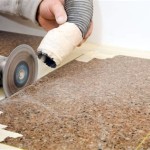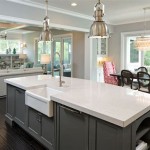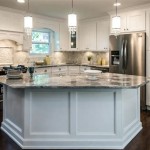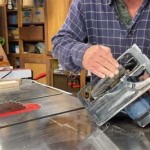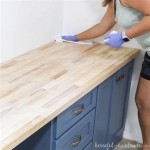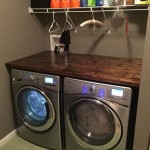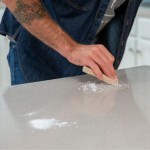Cement Countertops That Look Like Wood: A Durable Alternative
Cement countertops offer a unique blend of aesthetics and functionality, providing a durable and customizable surface for kitchens, bathrooms, and other interior spaces. While cement is often associated with an industrial or modern look, advancements in techniques and materials have made it possible to create cement countertops that convincingly mimic the appearance of natural wood. These faux-wood cement countertops offer homeowners and designers a compelling alternative, combining the warmth and texture of wood with the strength and longevity of cement.
The growing popularity of cement countertops stems from several factors. Durability is a primary driver; cement is highly resistant to heat, scratches, and stains compared to many other countertop materials. Customization is another significant advantage. Cement can be tinted to a wide range of colors and shaped to various dimensions, accommodating diverse design preferences. The ability to replicate the look of wood further expands the aesthetic possibilities, allowing designers to incorporate the visual appeal of natural wood without the maintenance and environmental concerns associated with it.
Creating cement countertops that convincingly resemble wood involves a combination of skilled craftsmanship, specialized techniques, and appropriate materials. The process typically begins with the design phase, where the desired wood grain pattern, color, and overall appearance are carefully planned. This blueprint guides the subsequent stages of mold creation, cement mixing, and finishing.
Achieving the Wood Grain Effect
One of the most crucial aspects of creating wood-look cement countertops is replicating the intricate grain patterns found in natural wood. Several methods are employed to achieve this effect. One common approach involves creating custom molds that incorporate the desired wood grain texture. These molds can be fabricated from various materials, including rubber, silicone, or wood itself. The mold's surface is meticulously detailed to capture the nuances of wood grain, knots, and other natural imperfections.
Another technique involves using stamps or stencils to imprint the wood grain pattern onto the surface of the wet cement. These stamps or stencils can be made from flexible materials that allow for easy application and removal. The chosen pattern is pressed firmly onto the cement, transferring the wood grain texture. A skilled artisan can manipulate the stamp or stencil to create variations and irregularities that enhance the realism of the wood grain effect.
A more advanced method utilizes a technique called "reactive staining." This involves applying chemical stains to the hardened cement surface, causing a reaction that creates unique color variations and patterns. When applied strategically, reactive stains can mimic the subtle shading and tonal contrasts found in wood grain, enhancing the visual depth and authenticity of the countertop. The success of this technique relies heavily on the artisan's expertise in applying the stains and controlling the reaction process.
The pigments added to the cement mix itself also play a critical role in achieving the desired wood tone. A careful blend of pigments can replicate the warm hues of oak, the rich browns of walnut, or the lighter shades of maple. The choice of pigments and their proportions is carefully calibrated to match the intended wood species. Furthermore, the use of multiple pigment layers or washes can create subtle variations in color, further enhancing the realism of the faux-wood finish.
Types of Cement and Additives
The selection of appropriate cement and additives is crucial for the durability, workability, and aesthetic qualities of wood-look cement countertops. Several types of cement are suitable, each with its own characteristics and advantages. Ordinary Portland cement (OPC) is a common choice, known for its strength and versatility. However, OPC can be prone to cracking and shrinkage, especially in large countertops. To mitigate these issues, various additives and supplementary cementitious materials (SCMs) are often incorporated into the mix.
Polymer-modified concrete is another option, where polymers are added to the cement mix to improve its flexibility, adhesion, and resistance to cracking. These polymers enhance the workability of the cement, making it easier to pour and shape. They also reduce the permeability of the concrete, protecting it from moisture penetration and staining. The addition of polymers can be particularly beneficial for countertops that are exposed to high levels of moisture or frequent use.
Glass fiber reinforced concrete (GFRC) is a widely used material in countertop construction, especially for larger or more complex designs. GFRC incorporates glass fibers into the cement matrix, significantly increasing its tensile strength and reducing its susceptibility to cracking. The glass fibers act as reinforcement, distributing stress evenly throughout the countertop and preventing fractures. GFRC allows for thinner and lighter countertops compared to traditional concrete, making it a suitable choice for applications where weight is a concern.
In addition to the cement type, various additives can be used to modify the properties of the concrete mix. Plasticizers are added to improve the workability of the cement, making it easier to pour and shape. Retarders are used to slow down the setting time of the cement, allowing for more time to work with the material and achieve the desired finish. Accelerators are used to speed up the setting time, particularly in cold weather conditions. Air-entraining agents are added to create microscopic air bubbles in the concrete, improving its resistance to freeze-thaw cycles and reducing the risk of cracking.
Sealing and Finishing for Long-Term Protection
Once the cement countertop has been cast, cured, and finished with the desired wood grain effect, sealing and finishing are essential to protect the surface from stains, scratches, and moisture damage. A high-quality sealer creates a barrier that prevents liquids and other contaminants from penetrating the porous cement. The choice of sealer depends on several factors, including the type of cement used, the desired level of gloss, and the intended use of the countertop.
Penetrating sealers are designed to soak into the cement, filling the pores and creating a water-repellent barrier. These sealers typically provide a matte finish and do not alter the natural appearance of the cement. They are a good choice for countertops that require a natural, understated look.
Topical sealers, on the other hand, form a protective layer on the surface of the cement. These sealers can provide a glossy or satin finish, enhancing the visual appeal of the countertop. They offer excellent resistance to stains and scratches, but they can be more susceptible to wear and tear over time compared to penetrating sealers.
In addition to sealing, other finishing techniques can be used to enhance the appearance and durability of wood-look cement countertops. Waxing can provide a protective layer and add a subtle sheen to the surface. Polishing can create a smooth, glossy finish that highlights the wood grain pattern. Grinding can remove imperfections and create a uniform surface texture. The choice of finishing techniques depends on the desired aesthetic and the level of protection required.
Maintaining wood-look cement countertops is relatively straightforward. Regular cleaning with a mild soap and water solution is typically sufficient to remove dirt and grime. Avoid using harsh chemicals or abrasive cleaners, as these can damage the sealer or finish. Periodically reapplying the sealer, typically every one to two years, is recommended to maintain the protective barrier and prevent staining. With proper care and maintenance, wood-look cement countertops can provide a durable and beautiful surface for many years.
The ability to combine the aesthetic appeal of wood with the durability and customization of cement makes wood-look cement countertops an attractive option for modern homes and commercial spaces. The skilled application of techniques to mimic wood grain, careful selection of cement types and additives, and appropriate sealing and finishing contribute to the creation of a long-lasting and visually stunning countertop surface.

How To Stain Faux Wood Stamped Concrete Direct Colors

Wood Look Concrete Countertops In The Kitchen Decor

Wood Finish Concrete Countertops Cheng Exchange

Jm Lifestyles Wood Form Concrete Countertops Exchange

8 Creative Concrete Countertop Designs

Concrete Countertops That Look Like Real Wood

Kitchen Renovation Ideas Pros And Cons Of Concrete Countertops

Woodform Concrete That Looks Like Wood Trueform

Woodform Concrete Kitchen Traditional New York By Jm Lifestyles
How To Stain Faux Wood Stamped Concrete Direct Colors
See Also

